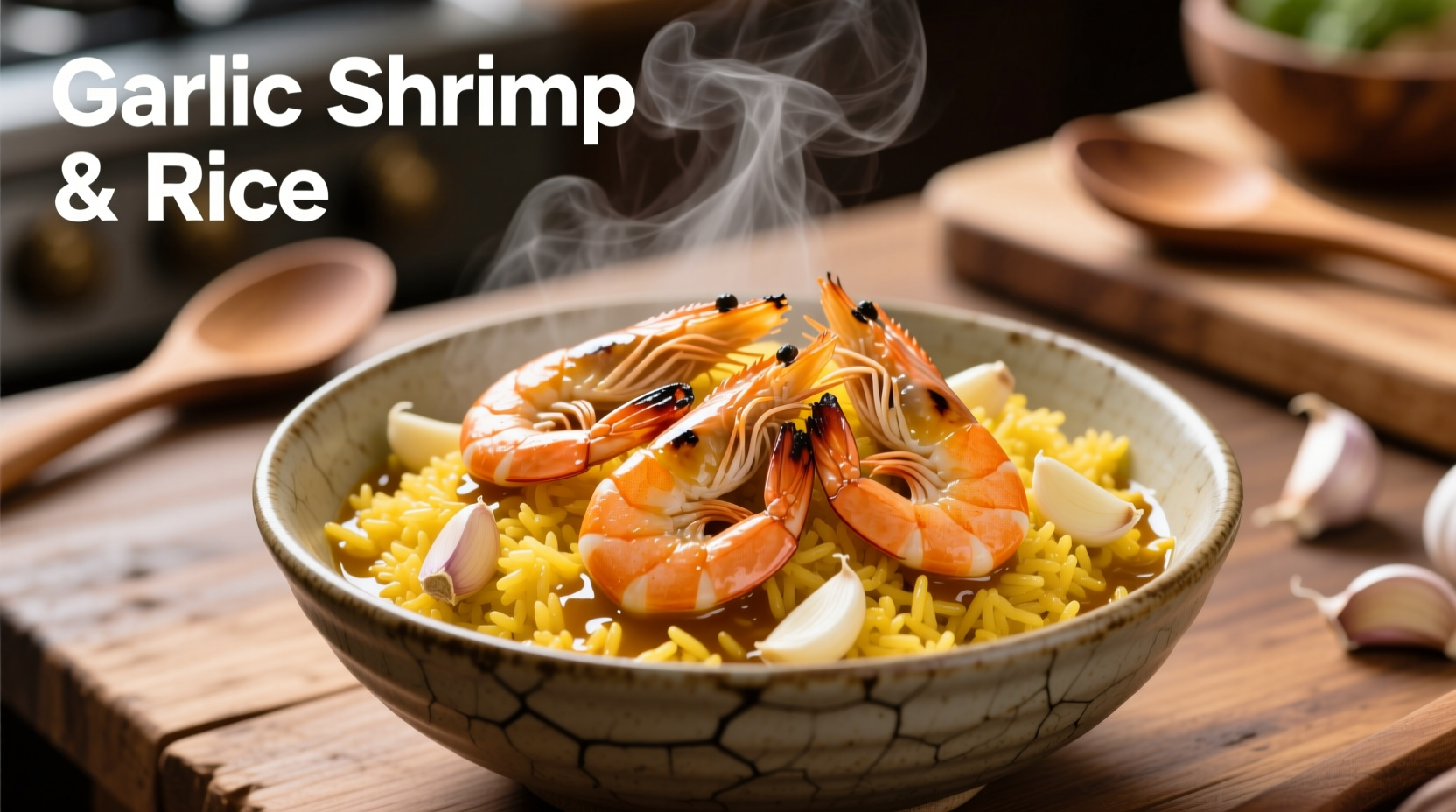Why This Garlic Shrimp and Rice Method Works
Most home cooks struggle with two critical elements: garlic that burns or lacks depth, and rice that turns out mushy or undercooked. Professional chefs use a two-stage garlic technique—adding half at the beginning for subtle flavor and half near the end for aromatic punch. For the rice, the absorption method (1:1.5 rice-to-liquid ratio) prevents common texture issues.
| Cooking Method | Shrimp Texture | Rice Consistency | Flavor Development |
|---|---|---|---|
| Standard Home Method | Rubbery (overcooked) | Inconsistent (mushy/dry) | One-dimensional garlic |
| Professional Technique | Plump, juicy | Separate, tender grains | Layered garlic notes |
Your Ingredient Quality Checklist
The quality of three key ingredients makes or breaks this dish. According to the FDA Seafood Guidelines, fresh shrimp should have firm texture and mild ocean scent—not ammonia-like odors. For garlic, the University of Minnesota Extension confirms that plump, tight-cloved bulbs with dry papery skin indicate peak freshness.
Step-by-Step Cooking Timeline
Follow this time-optimized sequence for perfect results:
- 0-5 minutes: Prep ingredients (chop garlic, measure liquids)
- 5-10 minutes: Start rice using absorption method (1 cup rice + 1.5 cups liquid)
- 15 minutes: Sear shrimp with half the garlic and red pepper flakes
- 20 minutes: Deglaze pan with lemon juice and broth
- 25 minutes: Add remaining garlic and shrimp back to sauce
- 28 minutes: Fluff rice and let shrimp rest in sauce

Avoid These 3 Common Mistakes
Mistake #1: Cooking garlic with shrimp from the start. Garlic burns at 325°F while shrimp needs 375°F to sear properly. Solution: Add half the garlic with shrimp, the rest during deglazing.
Mistake #2: Stirring rice while cooking. The Michigan Department of Agriculture confirms constant stirring releases excess starch, causing mushiness. Solution: Set timer and don't lift the lid for 15 minutes.
Mistake #3: Overcrowding the shrimp pan. Food safety experts at FoodSafety.gov warn this drops pan temperature, causing steaming instead of searing. Solution: Cook in batches if necessary.
When This Recipe Works Best (And When to Modify)
This technique shines for weeknight dinners needing quick preparation, but has specific context boundaries:
- Perfect for: Busy weeknights (30-minute meals), entertaining (impressive yet simple), meal prep (holds well for 3 days)
- Modify for: Large gatherings (double ingredients but cook shrimp in batches), dietary restrictions (sub coconut aminos for soy sauce)
- Avoid when: You need hands-off cooking (requires active attention during shrimp searing)
Pro Variations Worth Trying
Once you've mastered the base recipe, these chef-tested variations add exciting twists:
- Cajun Style: Add 1 tsp smoked paprika and ½ tsp thyme during deglazing
- Asian Fusion: Replace broth with coconut milk and add 1 tbsp ginger
- Spicy Garlic Lover's: Double garlic quantity and add ¼ cup roasted red peppers
Storage and Reheating Guide
Proper storage maintains texture. The USDA Food Safety and Inspection Service recommends cooling cooked seafood within 2 hours. For best results:
- Store components separately (shrimp in sauce, rice plain)
- Refrigerate for up to 3 days in airtight containers
- Reheat shrimp gently in skillet with splash of broth (microwaving makes shrimp rubbery)
- Revive rice with damp paper towel in microwave











 浙公网安备
33010002000092号
浙公网安备
33010002000092号 浙B2-20120091-4
浙B2-20120091-4